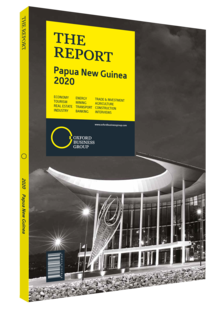Will global supply chains permanently shift due to Covid-19?
As globalisation has increased, the world’s supply chains have become substantially more interconnected, and goods often have more stages to pass through before reaching the end consumer. From national lockdowns to closed airspace and borders, Covid-19 has resulted in unprecedented disruption to the mechanics of most economies, regardless of their size or stage of development. In particular, these barriers have placed a major strain on international supply chains, including essential linkages relating to food and medicines.
Pharmaceuticals
While commercial airlines are temporarily repurposing their civilian aircraft to deliver personal protective equipment, the dynamics of pharmaceutical supply chains are more complex than those recently established to deliver medical supplies. China – the world’s largest producer of active pharmaceutical ingredients (API) – all but shut down industrial production to limit the spread of Covid-19, causing a shock along the entire chain. While India is a global leader in the production of generics, 70% of its raw materials come from China. Of this, one-third comes from Hubei, where the outbreak began. Crucially, India is a top global producer of paracetamol and hydroxychloroquine, the latter of which was undergoing trials to treat the virus. Although it was ultimately deemed to be ineffective, it had seen strong early demand in many countries based on the hopes it might prove to be a useful treatment option. This short-term disruption could result in a realignment of supply chains away from China and India, which may benefit countries with large internal markets relative to others in their region, such as Egypt, Indonesia, Saudi Arabia and Mexico.
However, the reorientation of supply chains will prove challenging for some countries. For example, Mexico relies on India and China for 90-95% of its APIs. “This reliance is compounded by the lack of international air connections,” Gurulinga Konanur, CEO of Hetero Drugs México, told OBG. “While countries with direct flights to India and China can maintain supply chains relatively well, Latin America will likely suffer shortages of certain key pharmaceutical products due to the lack of direct connections with the world’s largest producers.”
Food Value Chain
The sufficient provision of foodstuffs is also a priority for governments around the world. However, a combination of complex value chains and variations in produce makes for challenging supply chain management. There are two main commodity types for foodstuffs: staple crops, like wheat and maize; and high-value crops, such as fishery products, fruit and vegetables. Supply chain challenges for staple crops centre around logistics, whereas the challenge of maintaining high-value agricultural commodity value chains requires stakeholders to address potential labour shortages as well as logistical challenges. However, given that demand is expected to remain strong, prices for staple crops have not experienced the same decline felt by some other commodities – such as oil – as a result of the economic fallout of the pandemic. In fact, some agriculture-focused emerging economies could stand to benefit from the spikes in demand experienced across certain global food value chains. For example, Africa, as a net food importer, has seen a slight rise in agricultural trade as countries around the globe have moved to shore up their food stockpiles.
Long-Term Shifts
The pandemic may lead to more long-lasting structural shifts. According to some predictions, China could lose its central position in many global supply networks to Brazil, Mexico and certain emerging markets in South-east Asia. The reasons for this are two-fold: the initial shock from China-centric supply chains, caused by the country’s industrial shutdown in early 2020; and the US-China trade war, which had already pushed some companies to look elsewhere.
Covid-19 has also accelerated the trend of US companies looking to realign supply chains closer to home, in countries such as Mexico, while also diversifying them to reduce future exposure risk by relocating to Vietnam, Indonesia, Thailand and Malaysia, among others.
You have reached the limit of premium articles you can view for free.
Choose from the options below to purchase print or digital editions of our Reports. You can also purchase a website subscription giving you unlimited access to all of our Reports online for 12 months.
If you have already purchased this Report or have a website subscription, please login to continue.

